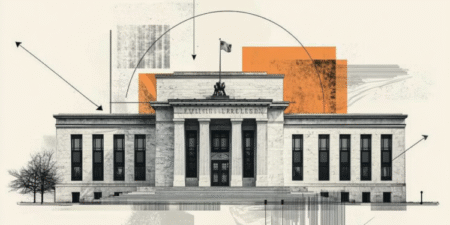- The Australian Unemployment Rate is forecast to have held steady at 4.1% in May.
- Employment Change is expected to post a modest 25K advance after a 89K gain in April.
- The Australian Dollar should benefit from upbeat figures regardless of the market’s sentiment.
The Australian Bureau of Statistics (ABS) will release the May monthly employment report at 01:30 GMT on Thursday. The country is expected to have added 25K new job positions, while the Unemployment Rate is projected to hold steady at 4.1%. Ahead of the announcement, the Australian Dollar (AUD) retains its overall strength, and the AUD/USD pair trades near the 2025 high at 0.6545.
The Australian April employment report was upbeat, as the economy added 89K new job positions, including 59,5K full-time positions and 29,5K part-time ones.
The ABS Employment Change separately reports full-time and part-time jobs. According to its definition, full-time jobs imply working 38 or more hours per week and usually include additional benefits, but they mostly represent consistent income. On the other hand, part-time employment generally offers higher hourly rates but lacks consistency and benefits. This is why full-time jobs are given more weight than part-time ones when it comes to measuring the health of the labour market.
Australian Unemployment Rate seen steady in May
The Australian Unemployment Rate is expected to have remained unchanged at 4.1% in May, marking a third consecutive month of stability.
Employment data is relevant as it’s part of the Reserve Bank of Australia (RBA) mandate. The Monetary Policy Board sets the monetary policy “in a manner that it believes best contributes to both price stability and the maintenance of full employment in Australia.”
The minutes of the May meeting showed policymakers’ concerns revolved around the United States (US) President Trump’s tariffs, and “how a persistent increase in trade barriers would affect the global economy.”
Regarding the labour market, the Board noted it had remained in line with the previous forecasts. “The unemployment rate had been around 4.1 per cent since the middle of 2024, while the underemployment rate had declined a little over that period. “Employment had recovered from the surprising fall recorded in February,” the document shows.
Other than that, some policymakers questioned whether this might see wages growth slow more noticeably than currently forecast.
Meanwhile, recent data showed that wage growth in the country has increased to 3.4% in the year to March, marking the first time wage growth has risen since the June quarter of 2024. Wages grew 0.9% on a quarterly basis in Q1 2025, up from the 0.7% posted in the previous quarter, according to the ABS.
Generally speaking, the upcoming Australian employment report, if the outcome matches expectations, is expected to have a limited impact on the Australian Dollar (AUD), as it is unlikely to affect future RBA monetary policy decisions. The central bank is scheduled to meet again in July.
Finally, financial markets may not pay much attention to data amid the ongoing Middle East crisis. The escalation of the Iran-Israel conflict and the involvement of the US maintain speculative interest in a risk-off mood. Additionally, the lack of progress in trade negotiations adds to the dismal sentiment.
When will the Australian employment report be released and how could it affect AUD/USD?
The ABS will publish the May employment report early on Thursday. As previously stated, Australia is expected to have added 25K new job positions in the month, while the Unemployment Rate is foreseen at 4.1%. Finally, the Participation Rate is expected to hold at 67.1%.
A better-than-anticipated employment report will likely boost the AUD, even if the more significant increase comes from part-time jobs. However, the advance could be more sustainable if the increase comes from full-time positions. The opposite scenario is also valid, with soft figures weighing on the Australian currency.
Valeria Bednarik, Chief Analyst at FXStreet, notes: “The AUD/USD pair trades near a recently achieved 2025 high at 0.6552, while posting higher highs on a weekly basis, keeping the dominant bullish trend alive. Given concerns about US economic progress within the trade war and its involvement in the Middle East crisis, the US Dollar (USD) seems poised to remain under pressure. In such a scenario, the AUD/USD pair may quickly find buyers should a discouraging employment report push it lower.”
Bednarik adds: “An upbeat employment report, on the other hand, can push the AUD/USD pair towards fresh 2025 highs, with the 0.6600 threshold in sight.”
Economic Indicator
Unemployment Rate s.a.
The Unemployment Rate, released by the Australian Bureau of Statistics, is the number of unemployed workers divided by the total civilian labor force, expressed as a percentage. If the rate increases, it indicates a lack of expansion within the Australian labor market and a weakness within the Australian economy. A decrease in the figure is seen as bullish for the Australian Dollar (AUD), while an increase is seen as bearish.
Read more.
Economic Indicator
Employment Change s.a.
The Employment Change released by the Australian Bureau of Statistics is a measure of the change in the number of employed people in Australia. The statistic is adjusted to remove the influence of seasonal trends. Generally speaking, a rise in Employment Change has positive implications for consumer spending, stimulates economic growth, and is bullish for the Australian Dollar (AUD). A low reading, on the other hand, is seen as bearish.
Read more.
Read the full article here
















